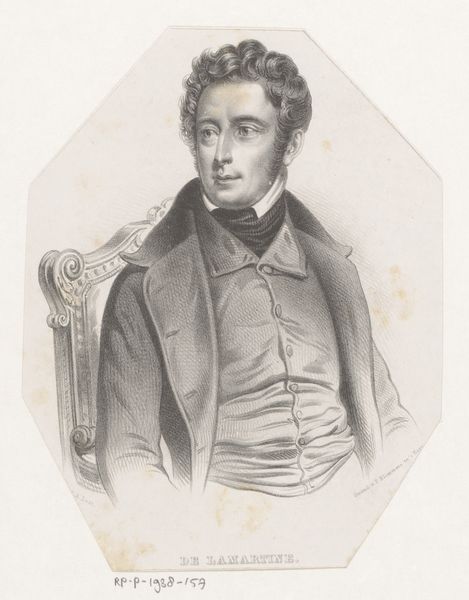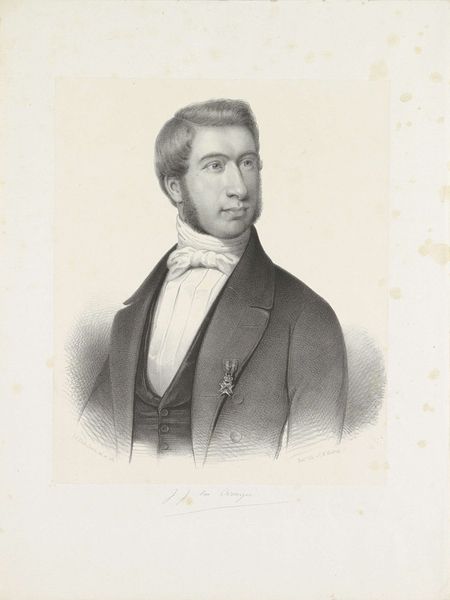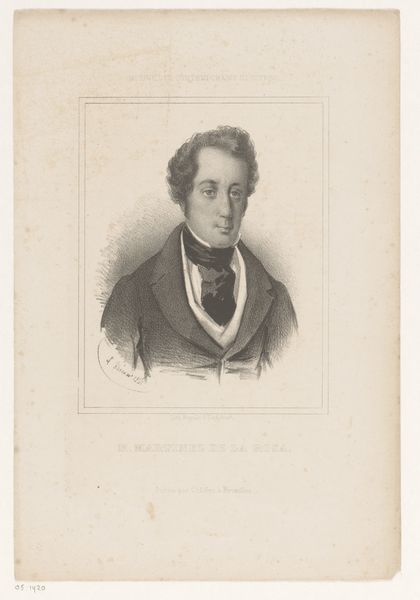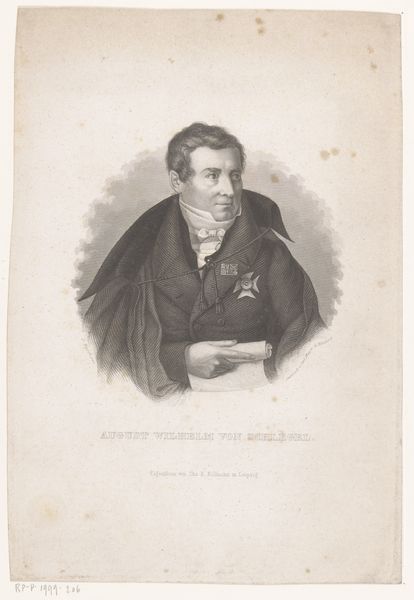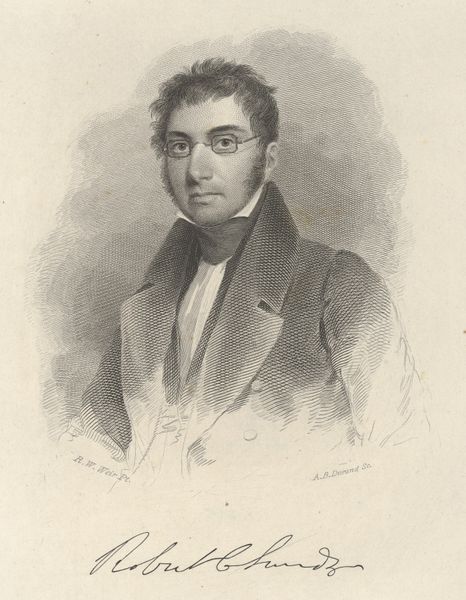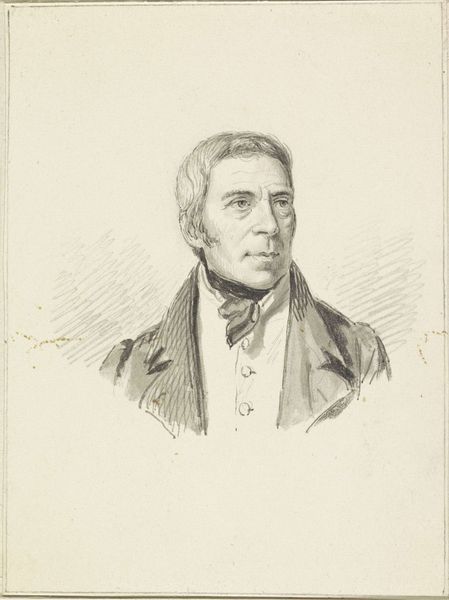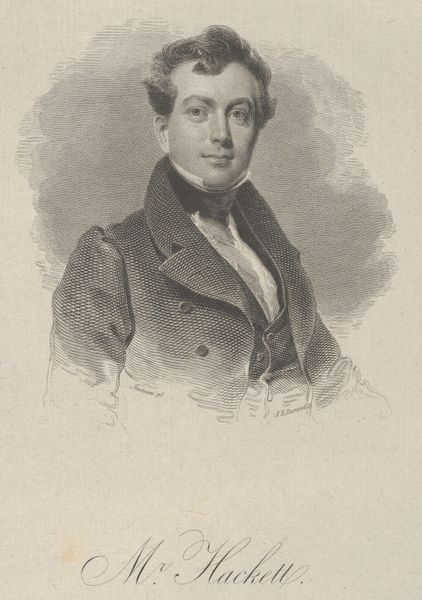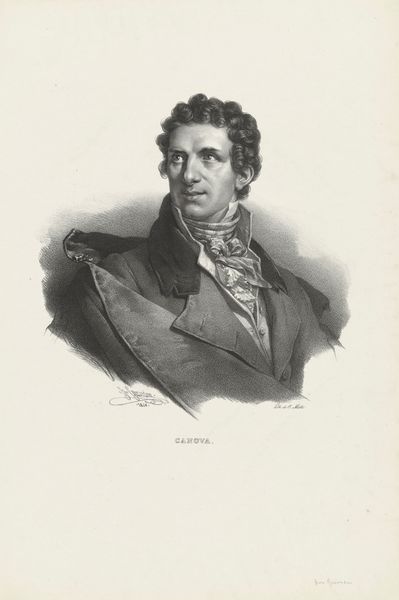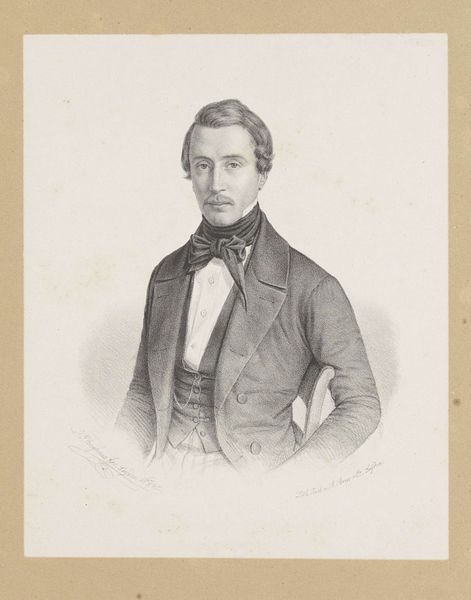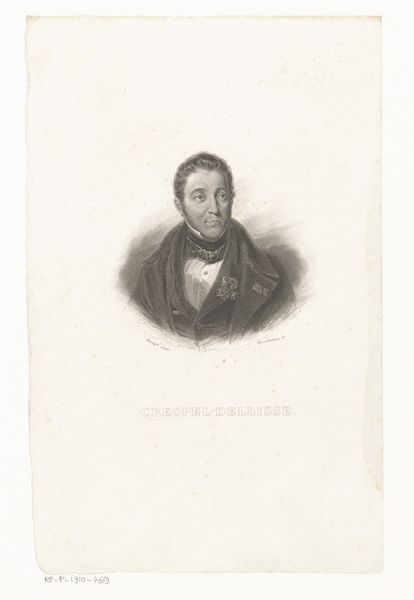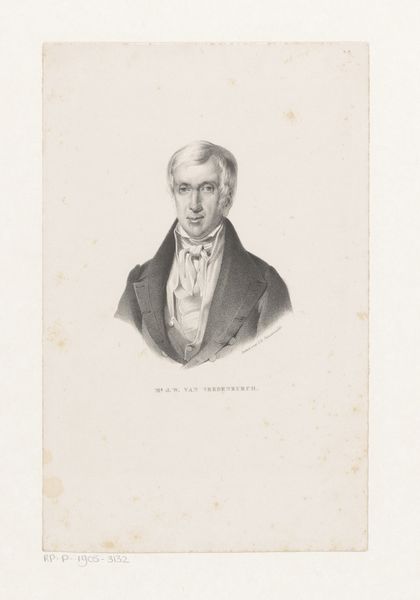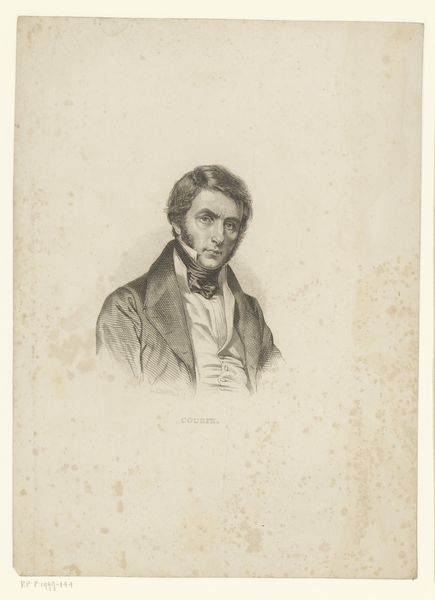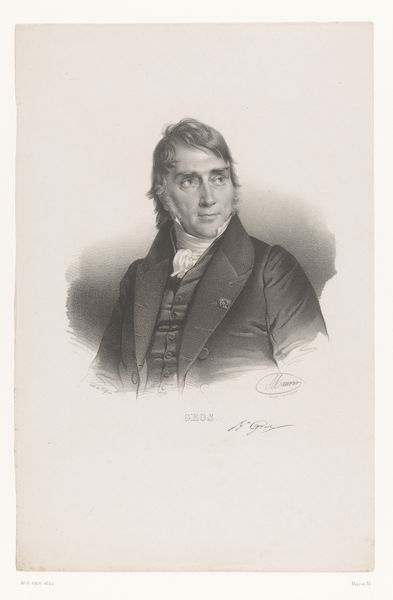
drawing, print, engraving
#
portrait
#
drawing
#
neoclacissism
# print
#
engraving
Dimensions: plate: 6 1/16 x 4 7/16 in. (15.4 x 11.2 cm)
Copyright: Public Domain
Curator: Staring at this engraving, "Garrit Furman," done sometime between 1825 and 1835 by Asher Brown Durand… gosh, he seems awfully serious, doesn't he? There's almost no softening around the eyes. Just a stern gaze. Editor: I agree, the sitter, Furman, projects a real sense of early 19th-century resolve. Notice how the severe Neoclassical lines of the portrait contrast with the decorative, almost fanciful lyre below his name. Curator: Right, that lyre – kind of an odd flourish, isn't it? Given his austere expression, it feels… out of place. Maybe he had a secret passion for music he was hiding behind that rather rigid collar. Or it hints at cultural aspirations that balance the more puritanical constraints of that time. Editor: Precisely. The lyre, often associated with Apollo, symbolizes culture, refinement, and artistic pursuits. It serves as an attribute, indicating Furman's involvement in or appreciation for intellectual and creative endeavors, maybe he was an educated merchant? The clothing may also represent his class, but his face reflects personal integrity. Curator: You know, the more I look at the rendering, at the tight cross-hatching giving shape to the face, the more I see a determined self-making. Every line feels intentional, adding to a controlled but intense energy—or tension maybe is a better way to describe it. I can’t help imagining Durand laboring meticulously to reveal Furman’s supposed character. Editor: I like how you highlight the contrast. Durand captures Furman within a precise aesthetic framework; however, he also reveals an attempt to harmonize ideals—perhaps suggesting the melding of cultural values within Furman's persona and societal role. There's that tension again... Curator: Yeah, maybe Furman wasn't as stern as I first thought. Durand captured him during the calm before the storm of the Industrial Revolution, standing on the edge of vast cultural and economic changes. Perhaps that uncertainty—the pressure—is visible in his face, in the shadow just under his eyes. Editor: Yes, that’s beautifully put. Looking at his portrait through your perspective helps bridge the gap between formal representation and the anxieties of an era finding its own new tempo. Curator: To imagine his true self through line and symbolism makes one think how identities are composed both inwardly and through the eyes and hands of others... Thanks! Editor: A good ending. Thank you.
Comments
No comments
Be the first to comment and join the conversation on the ultimate creative platform.
